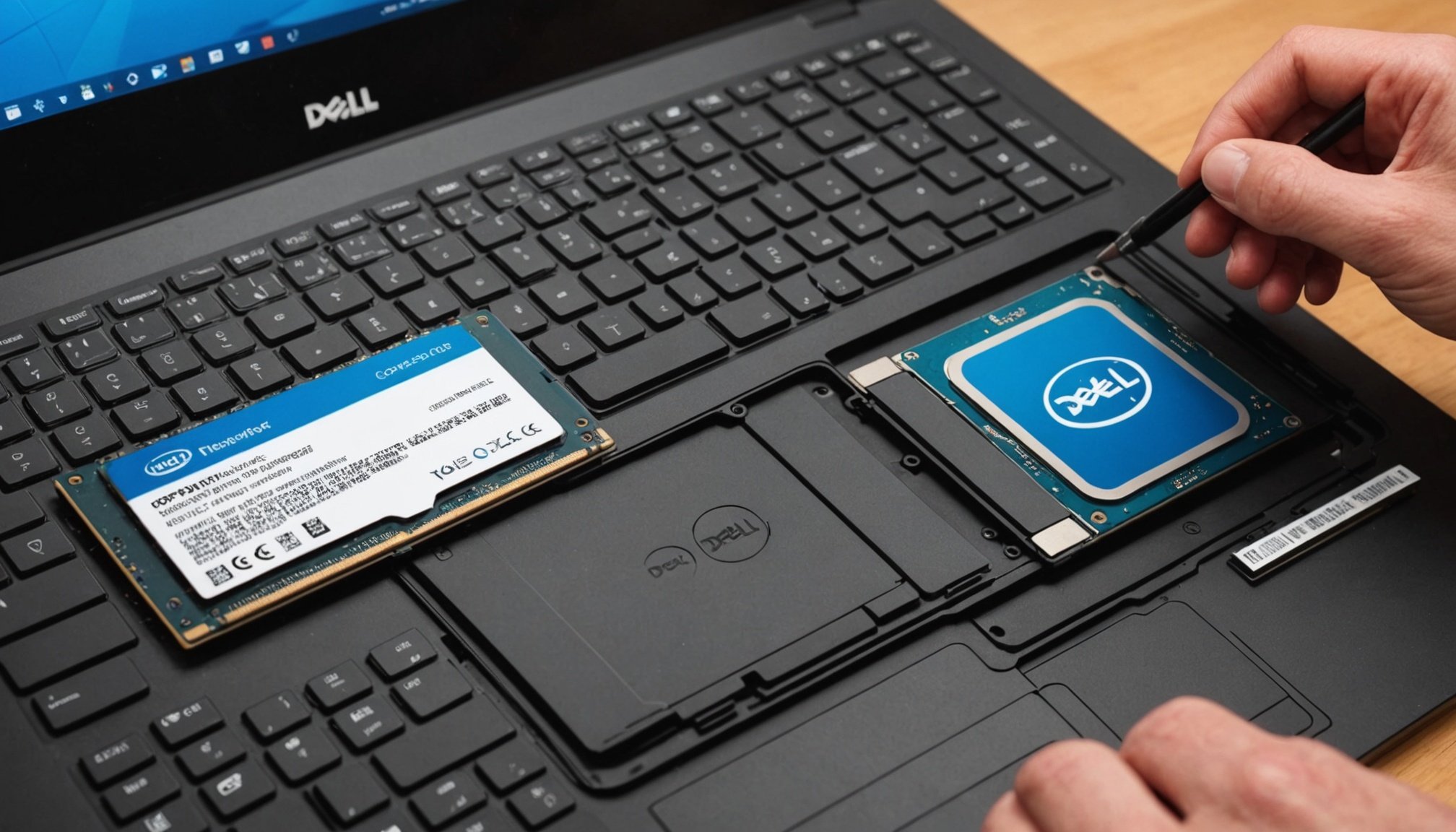Introduction to Intel Optane Memory
Intel Optane Memory represents a significant leap in storage technology, offering a performance boost to systems like the Dell XPS 15. This innovative solution bridges the gap between traditional storage and memory, enhancing overall efficiency. The technology leverages the combination of high-speed storage media with intelligent software to accelerate system responsiveness and operational workflows.
Overview of Intel Optane Memory Technology
The core of Intel Optane Memory lies in its high-speed media, which acts as a caching layer for frequently accessed data and applications. This allows the Dell XPS 15 to retrieve data more swiftly than with standard storage solutions, making everyday tasks and applications run smoothly. In professional environments, such improvement translates to reduced waiting times and increased productivity.
Also to see : Supercharge Your Lenovo ThinkPad P52: Unlock Its Potential for Effortless Machine Learning Model Training
Benefits of Using Optane Memory for Performance Enhancement
Users can expect their Dell XPS 15 to start up more quickly, with significant improvements in loading times for applications and large files. This is particularly beneficial for individuals working with data-intensive programs, providing a seamless experience that allows for swift multitasking without performance hiccups.
Key Features of Intel Optane Memory
Among its standout features, Optane Memory offers adaptability as it learns and optimises based on individual usage patterns. Additionally, its durability ensures a longer lifespan compared to traditional storage, contributing to the overall sustainability and cost-effectiveness of upgrade decisions.
Have you seen this : Supercharge Your Remote Work Efficiency: Essential Setup Tips for Your HP Elite Dragonfly with Multiple Monitors
Compatibility Checks
Selecting the correct Dell XPS 15 model is crucial when considering the integration of Intel Optane Memory. Compatibility depends on specific system configurations and firmware versions. It’s not a one-size-fits-all situation; users must confirm their model’s compatibility with this advanced technology.
Start by identifying your Dell XPS 15 model number, typically found on the bottom of the chassis or through your system’s settings menu. The minimum system requirements for Intel Optane Memory generally include an Intel Core processor, a compatible chipset, and a UEFI BIOS.
Understanding your current hardware is essential. This can be done by checking the system configuration in your BIOS or via software solutions that detail your hardware specifications. These steps ensure your device is equipped and ready for the memory integration, preventing issues later.
Before proceeding, ensure that your Dell XPS 15 is running the latest firmware updates. Newer updates frequently resolve bugs or introduce new features that enhance the memory’s functioning.
By confirming these aspects, users can confidently install the memory, knowing they are equipped with the right system for optimal performance enhancement and utilisation. This proactive approach helps avoid future complications with Intel Optane Memory integration.
Detailed Installation Guide
To install Intel Optane Memory in a Dell XPS 15, follow a comprehensive step-by-step process to ensure successful integration. Prepare your system for the installation by first addressing any necessary backups and familiarising yourself with the internal layout of your laptop.
Preparing for Installation
Prior to beginning, it’s crucial to backup all essential data. This safety measure prevents any potential data loss during the installation process. Ensure that your Dell XPS 15 is powered down and disconnected from any power source to avoid electrical hazards.
Installing Intel Optane Memory Module
Once prepared, locate the M.2 slot where the Optane Memory module will be installed. This slot is typically near the battery or fan. Carefully insert the Optane Memory module into the slot, ensuring it clicks into place securely.
Setting it up in BIOS
After physical installation, power on your Dell XPS 15 and access the BIOS by pressing the designated key (usually F2 or Del) upon startup. In BIOS, enable the Intel Rapid Storage Technology (RST) and ensure the system recognises the new Optane module. This configuration step is necessary for the memory to function seamlessly alongside existing storage systems, providing the intended performance boost.
Configuration Settings for Optimal Performance
Configuring your Intel Optane Memory effectively is crucial for reaping the full performance boost on your Dell XPS 15. Optimal settings and usage can drastically improve system responsiveness, making it essential to tailor the technology to your specific needs and tasks.
Recommended Settings for Integration
To begin, verify that the Intel Rapid Storage Technology (RST) is enabled in the BIOS settings. This ensures the Optane Memory can be utilised efficiently, comprehending your usage patterns. For enhanced productivity, enable the “Accelerate” option within the Intel RST application on your desktop. This configuration provides faster data access and smooth operation of frequently used applications and files.
System Optimisation Tips
Optimising your setup involves some simple tweaks, such as ensuring your system drive where the operating system resides is accelerated by Optane Memory. This action performs read and write tasks more swiftly, reducing loading times.
Additionally, regularly updating your device drivers and software is recommended for maintaining optimal performance. Doing so allows for consistent improvements and address potential bottlenecks in system operation.
Leveraging Intel Optane Memory Daily
For daily tasks, let Optane Memory handle common data load; this keeps transitions smooth whether multitasking or managing extensive workflows. By configuring these settings, users can fully utilise Intel Optane Memory’s capabilities, turning their Dell XPS 15 into an efficient powerhouse.
Troubleshooting Tips
Experiencing trouble with your Intel Optane Memory in a Dell XPS 15? Here are some steps to help address possible issues. Performance problems can arise post-installation but solving them is often straightforward.
Common installation and performance issues revolve around incorrect setup or configuration. Ensure that the Intel Rapid Storage Technology (RST) is enabled within your BIOS. This setting allows the memory module to function properly. If your Dell XPS 15 fails to recognize the new hardware, verify that the module is securely seated in the M.2 slot, as loose connections can lead to non-detection issues.
For step-by-step troubleshooting, consider the following:
- Reboot your system to refresh connections and settings.
- Double-check all physical connections including power and data.
- Update your BIOS and drivers to the latest versions, as they often include patches for common errors.
Should issues persist, utilise resources for additional support. Dell provides user manuals and online support forums that can offer solutions specific to your model. Alternatively, Intel’s website includes detailed support documents that might address your particular problem. Keeping these resources at hand ensures you can swiftly rectify Intel Optane Memory issues, maintaining peak performance for your device.
FAQs
Understanding the intricacies of Intel Optane Memory and its interaction with the Dell XPS 15 can prompt many questions. Here, we address some of the most common user inquiries to provide clarity and guidance.
Frequently Asked Questions
Q: Will installing Intel Optane Memory void my warranty?
A: No, installing Intel Optane Memory does not void your Dell warranty. However, it is crucial to follow the manufacturer’s guidelines during installation to prevent any potential damage.
Q: How does Intel Optane Memory enhance performance?
A: Optane Memory acts as a high-speed cache between storage and the CPU, providing a significant performance boost by accelerating data access. This leads to faster boot times, quicker application launching, and smoother multitasking on your Dell XPS 15.
Q: What are the maintenance requirements after installation?
A: Routine maintenance is minimal. Regularly update your BIOS and drivers to ensure continued performance optimisation. Optane Memory is built for durability, offering longevity with little intervention.
Common Concerns Clarified
-
System Impact: Users often worry about the impact on existing systems. Rest assured, Optane Memory complements current hardware.
-
Compatibility: Concerns regarding model compatibility can be mitigated by checking system requirements and verifying with Dell support.
-
Performance Gains: By learning usage patterns, Optane Memory delivers tangible enhancements, evident in real-world tasks and application responsiveness.
Performance Benchmarks
Understanding the impact of Intel Optane Memory performance on the Dell XPS 15 involves examining benchmark results. These benchmarks provide critical insights into the performance boost that Optane brings by evaluating key metrics before and after installation.
Performance comparisons often reveal that systems equipped with Optane display noticeable improvements in boot times and application loading speeds. For instance, users might see boot times reduced by nearly half and application launch times slashed significantly. This performance boost is particularly evident in data-intensive tasks, where Optane acts as a speed-enhancing cache.
Key metrics to assess include:
- Boot and load times: Reduced from minutes to seconds, providing a smoother startup experience.
- Data access speed: Faster retrieval and processing of big files and frequently used applications.
- Multitasking efficiency: Enhanced capability to handle numerous applications simultaneously without lag.
Real-world application tests include scenarios like video and photo editing, where the Dell XPS 15 equipped with Intel Optane demonstrates increased efficiency and responsiveness. Such benchmarks underscore the practicality and benefits of integrating Optane Memory into daily workflows, turning routine operations into fluid and seamless tasks, ultimately enhancing productivity.





